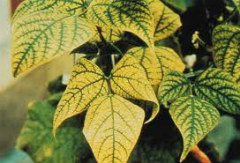- Environmental effects of manganese
- Manganese compounds exist naturally in the environment as solids in the soil and small particles in the water.Manganese particles in the air are present in dust particles. These usually settle back to earth within a few days.
- Humans increase manganese concentrations in the air by industrial activities and through burning fossil fuels. Manganese that comes from human sources can also enter surface water, groundwater and sewage water. Through the application of manganese pesticides, manganese will enter soil.
- For animals, manganese is an essential component of over 36 enzymes that are used for their carbohydrate, protein and fat metabolism. When animals eat too little manganese, their growth, bone formation and reproduction will be affected. For some animals the lethal dose is very low, thus they have little chance of surviving when their uptake of manganese exceeds the essential dose. Manganese substances can cause lung, liver and vascular disturbances, reduced blood pressure, development failure in animal foetuses and brain damage. Laboratory tests on animals have shown that severe manganese poisoning can also cause tumor development within animals.
 In plants, manganese ions are transported to the leaves after uptake from the soil. Manganese can cause both toxicity and deficiency symptoms in plants. When the pH of the soil is low, manganese deficiencies usually occur. Plants’ mechanisms will be disturbed when they can’t absorb sufficient manganese from the soil. Highly toxic concentrations of manganese in soils can also do harm to plants, causing swelling of cell walls and withering and brown spots on leaves. Deficiencies can also cause these effects.
In plants, manganese ions are transported to the leaves after uptake from the soil. Manganese can cause both toxicity and deficiency symptoms in plants. When the pH of the soil is low, manganese deficiencies usually occur. Plants’ mechanisms will be disturbed when they can’t absorb sufficient manganese from the soil. Highly toxic concentrations of manganese in soils can also do harm to plants, causing swelling of cell walls and withering and brown spots on leaves. Deficiencies can also cause these effects.
-
About us
Contact us
Make a suggestion
- Metalpedia is a non-profit website, aiming to broaden metal knowledge and provide extensive reference database to users. It provides users reliable information and knowledge to the greatest extent. If there is any copyright violation, please notify us through our contact details to delete such infringement content promptly.
 In plants, manganese ions are transported to the leaves after uptake from the soil. Manganese can cause both toxicity and deficiency symptoms in plants. When the pH of the soil is low, manganese deficiencies usually occur. Plants’ mechanisms will be disturbed when they can’t absorb sufficient manganese from the soil. Highly toxic concentrations of manganese in soils can also do harm to plants, causing swelling of cell walls and withering and brown spots on leaves. Deficiencies can also cause these effects.
In plants, manganese ions are transported to the leaves after uptake from the soil. Manganese can cause both toxicity and deficiency symptoms in plants. When the pH of the soil is low, manganese deficiencies usually occur. Plants’ mechanisms will be disturbed when they can’t absorb sufficient manganese from the soil. Highly toxic concentrations of manganese in soils can also do harm to plants, causing swelling of cell walls and withering and brown spots on leaves. Deficiencies can also cause these effects. 